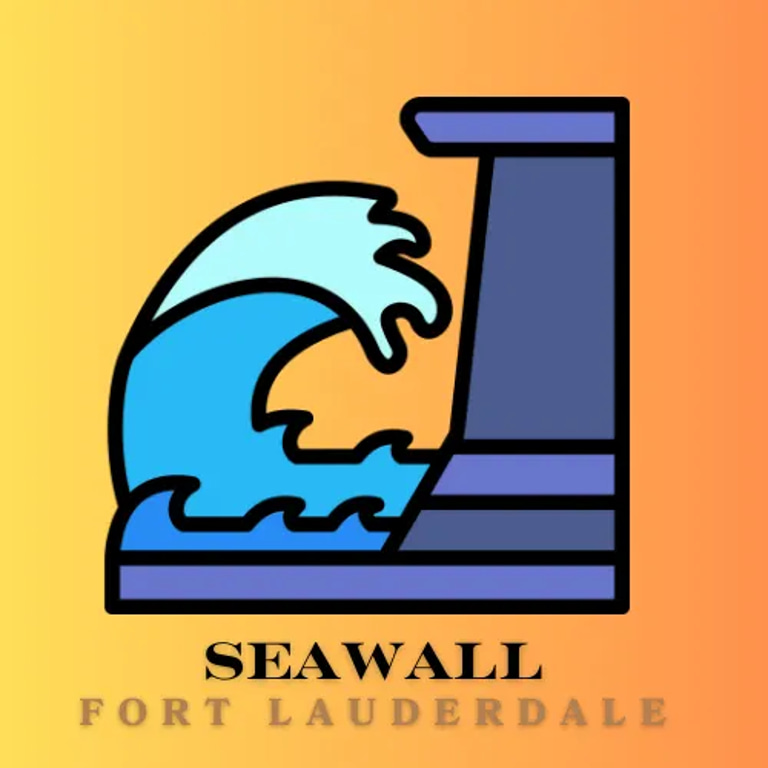What’s Included in a Seawall Inspection
Learn what is included in a seawall inspection- costs, checklist, hidden damage signs, and code compliance for Broward County properties. Schedule your expert inspection today!
SEAWALL INSPECTION
8/19/20254 min read


Seawall Inspection
What Does a Seawall Inspection in Fort Lauderdale Actually Involve?
Florida’s coastline is stunning, but owning a waterfront property in Fort Lauderdale means more than just enjoying the view—it comes with responsibilities, especially if your property includes seawall. These critical structures protect your land from erosion, tides, and storm surges. But without regular inspections, hidden damage can escalate quickly and expensively.
If you're wondering what is included in a seawall inspection, this comprehensive guide from Seawall Fort Lauderdale walks you through the full process—including inspection checklists, local regulations, cost factors, and why staying compliant with seawall code requirements is essential for every coastal property owner.
Why Seawall Inspections Matter in Fort Lauderdale
Fort Lauderdale’s 165 miles of canals and extensive beachfront mean many homes and businesses depend on seawalls. Over time, seawalls suffer wear and tear due to:
Saltwater corrosion
Hydrostatic pressure
Boat wake
Tidal fluctuations
Hurricane-force winds
This coastal exposure makes regular inspections not just smart—but necessary. Neglecting your seawall can lead to:
Costly emergency repairs
Fines from Broward County regulatory requirements
Property flooding and damage
Safety liabilities
What Is Included in a Seawall Inspection in Fort Lauderdale?
A professional seawall inspection typically includes the following components:
1. Visual Assessment of Structural Integrity
Inspectors look for:
Cracks or fractures in the wall surface
Signs of bowing, leaning, or movement
Settlement of the soil behind the wall
Erosion or sinkholes
2. Inspection of Cap and Panel Condition
The cap (top surface) and panels (main wall structure) are examined for:
Concrete degradation
Rust stains (indicating rebar corrosion)
Joint separation
3. Toe Scour & Foundation Checks
Divers or underwater drones may inspect the seawall base:
Detecting toe scour (erosion at the base)
Checking for undercutting or exposed foundations
4. Tie-Back and Anchor System Analysis
Tie-backs and deadmen help the wall resist water pressure:
Inspectors check for signs of failure, movement, or corrosion
5. Drainage System Functionality
Drainage is critical to relieving hydrostatic pressure:
Blocked weep holes
Evidence of water retention
Soil saturation behind the wall
6. Backfill & Soil Movement Assessment
The area behind the seawall is checked for:
Soil washout or voids
Settlement that could indicate structural failure
7. Review of Compliance with Local Regulations
An inspection includes a review of:
Seawall code compliance
Regulatory requirements
Permit status and any necessary renewals
8. Photographic Documentation & Report
Most inspection services include:
A full written report
High-resolution photos
Recommended action plan
Seawall Inspection Checklist: Key Points
Component
Wall Surface - Cracks, leaning, fractures, visible deterioration
Cap and Panels - Concrete spalling, rust stains, structural breaks
Drainage Holes - Blockage, improper spacing, signs of pressure buildup
Toe & Base - Undermining, scour, marine life infestation
Soil Behind Wall - Sinkholes, erosion, soft soil
Anchoring Systems - Movement, corrosion, pullback issues
Compliance - Permit validation, code adherence
Seawall Code Compliance in Fort Lauderdale: Why It Matters
In Fort Lauderdale, seawall structures must comply with:
Florida Building Code
Broward County environmental and structural regulations
Fort Lauderdale city ordinances on coastal erosion and flood management
As of 2021, updates in Florida state law require seawalls to prevent tidal overflows and maintain certain elevation heights. Non-compliance can lead to:
Denied building permits
Insurance challenges
Potential fines
Getting an inspection is often the first step toward code compliance and avoiding legal liability.
Hidden Seawall Damage Signs You Shouldn't Ignore
Many structural issues go unnoticed until it's too late. Be alert to these hidden seawall damage signs:
Water pooling behind the wall
Unusual algae growth along the base
Cracks in nearby walkways or decks
Leaning fence posts or railings
Salt residue or white streaks on the wall
These can signal deeper problems below the surface and merit immediate professional evaluation.
How Often Should You Inspect Your Seawall?
The general rule of thumb for seawall inspections in Fort Lauderdale is:
Every 1–2 years for residential seawalls
Annually for commercial, marina, or high-traffic seawalls
Immediately after major storms or hurricanes
Before listing or purchasing waterfront property
Regular inspections ensure your seawall remains structurally sound, environmentally safe, and code compliant with local and state regulations.
Do You Need Permits for Seawall Repairs?
Yes. Any structural modification or repair to a seawall in Fort Lauderdale requires appropriate permitting. This typically includes:
Local permits from the City of Fort Lauderdale or Broward County
Environmental impact assessments, especially for work near protected waters
Possible involvement from the Army Corps of Engineers for marine and navigable areas
Failing to secure the correct permits can delay your project, increase liability, and result in fines or legal complications. Always work with licensed marine contractors who understand local compliance requirements.
Final Thoughts
If you own or manage waterfront property in Fort Lauderdale, understanding what is included in a seawall inspection is essential for property longevity, regulatory compliance, and financial protection.
Don’t wait for a costly collapse—schedule regular inspections, ensure seawall code compliance in Fort Lauderdale, and safeguard your investment against Florida’s ever-changing coastal conditions.
Contact Seawall Fort Lauderdale today for expert seawall inspection, maintenance, and repair services tailored to your property’s needs.
FAQs About Seawall Inspections in Fort Lauderdale
1. How do I know if my seawall is failing?
Look for cracks, bulging, sinkholes, and water leakage behind the wall. Unusual algae growth and soil settlement are also warning signs.
2. What is included in a professional seawall inspection in Fort Lauderdale?
The process includes visual and underwater inspection of the wall, drainage system, anchoring, backfill, and a code compliance review with photo documentation.
3. How often should I inspect my seawall in Broward County?
At least every 1-2 years, or more frequently after major weather events or if signs of damage appear.
4. Do I need a permit to repair my seawall?
Yes, most structural repairs require city and county permits, especially if near waterways regulated by state or federal agencies.
5. Is a seawall inspection required when selling my waterfront property?
While not always required by law, many buyers, insurers, and lenders will request a recent inspection report to verify property integrity.
Search
Is your seawall secure?
Don't wait for a small problem to become a disaster. Get a professional evaluation.
Innovation
Renovating seawalls with modern technology and materials.
Quality
Strength
© 2024. All rights reserved.
